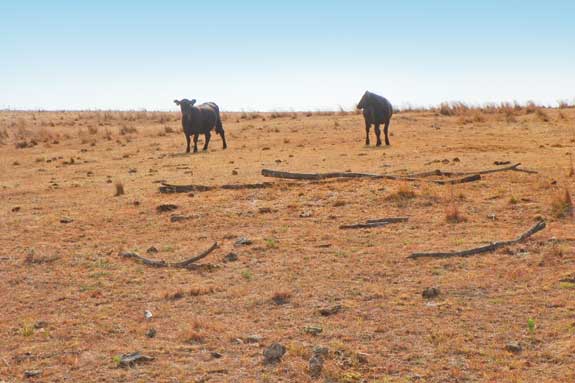
Weekly, Oklahoma State University Extension Beef Cattle Nutrition Specialist Paul Beck offers his expertise on the beef cattle industry. This is a part of the weekly series known as the “Cow-Calf Corner.” Today, he talks about increasing the resilience of the beef cattle supply.
Last week I covered some of the impacts of drought on cow numbers and the feeder cattle supply based on comments I made at a symposium at the American Society of Animal Science meeting held in Calgary “Increasing the Resilience of the Beef Cattle Feeder Supply”. This week I will cover some additional impacts of drought and changing weather patterns on cattle reproductive performance.
Increased culling of cows and earlier marketing of calves has triggered the decreased cattle numbers we are currently experiencing, but the drought and climatic conditions have other impacts on cattle supplies as well. Drought and climate extremes are related to reductions in forage growth and quality, and heat stress of livestock. Cows under nutrient restrictions due to the lack of available forage or forage of low nutritive quality lose body weight and body condition resulting in reduced fertility and rebreeding rates, further exacerbating the already reduced cattle numbers. Cows under heat stress and undernutrition have reduced production and quality of colostrum, impacting immune function and lifetime health and wellbeing of their progeny. Below is data from Dr. Richard Prather and Ellis County Animal Hospital showing artificial insemination pregnancy (PAI) rates from 3 herds in 2022 and 2023. Cows in herd 4 (light blue bars) were maintained in adequate body condition (BCS) in both years with excellent fertility and reproduction rates. Cows in herd 6 lost condition from breeding to pregnancy check in 2022 and had lower breeding rates, but increasing condition in 2023 improved cow fertility. While cows in herd 2 were thinner in 2023 and continued to lose condition, resulting in reduced fertility in 2023.

Drought and climate extremes result in disruptions in cattle supply and reduced fertility of thin cows. Along with reduced cow rebreeding rates, heat stress or nutrient restriction of gestating cows will result in long-term reductions in productivity of their offspring. The heifer offspring of undernourished cows have lower fertility and steer calves have lower performance and carcass quality at slaughter later in life. Below is the heifer artificial insemination results from Dr. Prather’s cowherd analytics along with the rainfall from April through July of each year. Average AI success in heifers from these herds declined in 2021, the year after the start of the drought in 2020 and continued to be low in 2023 even with the higher rainfall that year. This indicates that the scarcity conditions the cows were in during the drought impacted the future fertility of their offspring they were carrying. The impacts of poor nutrition can be generational.


Next week I will discuss the impacts drought and changing weather patterns have on health and performance of feeder calves.
If you were forwarded this email and want to get it delivered straight to your email inbox, email Paul Beck (paul.beck@okstate.edu) or Derrell Peel (derrell.peel@okstate.edu) to be added to our email list.


















